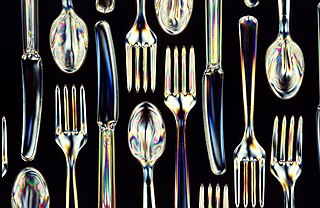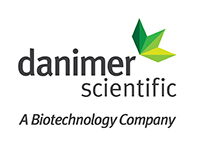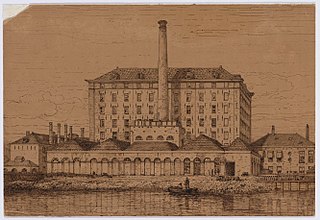
Biopolymers are natural polymers produced by the cells of living organisms. Like other polymers, biopolymers consist of monomeric units that are covalently bonded in chains to form larger molecules. There are three main classes of biopolymers, classified according to the monomers used and the structure of the biopolymer formed: polynucleotides, polypeptides, and polysaccharides. The Polynucleotides, RNA and DNA, are long polymers of nucleotides. Polypeptides include proteins and shorter polymers of amino acids; some major examples include collagen, actin, and fibrin. Polysaccharides are linear or branched chains of sugar carbohydrates; examples include starch, cellulose, and alginate. Other examples of biopolymers include natural rubbers, suberin and lignin, cutin and cutan, melanin, and polyhydroxyalkanoates (PHAs).

Lactic acid is an organic acid. It has the molecular formula CH3CH(OH)COOH. It is white in the solid state and it is miscible with water. When in the dissolved state, it forms a colorless solution. Production includes both artificial synthesis as well as natural sources. Lactic acid is an alpha-hydroxy acid (AHA) due to the presence of a hydroxyl group adjacent to the carboxyl group. It is used as a synthetic intermediate in many organic synthesis industries and in various biochemical industries. The conjugate base of lactic acid is called lactate. The name of the derived acyl group is lactoyl.
A bio-based material is a material intentionally made from substances derived from living organisms. These materials are sometimes referred to as biomaterials, but this word also has another meaning. Strictly the definition could include many common materials such as wood and leather, but it typically refers to modern materials that have undergone more extensive processing. Unprocessed materials may be called biotic material. Bio-based materials or biomaterials fall under the broader category of bioproducts or bio-based products which includes materials, chemicals and energy derived from renewable biological resources.
Ingeo is the trademarked brand name for a range of polylactic acid (PLA) biopolymers owned by NatureWorks.

Tate & Lyle PLC is a British-headquartered, global supplier of food and beverage products to food and industrial markets. It was originally a sugar refining business, but from the 1970s, it began to diversify, eventually divesting its sugar business in 2010. It specialises in turning raw materials such as corn and tapioca into ingredients that add taste, texture, and nutrients to food and beverages. It is listed on the London Stock Exchange and is a constituent of the FTSE 250 Index.

PLGA, PLG, or poly(lactic-co-glycolic acid) is a copolymer which is used in a host of Food and Drug Administration (FDA) approved therapeutic devices, owing to its biodegradability and biocompatibility. PLGA is synthesized by means of ring-opening co-polymerization of two different monomers, the cyclic dimers (1,4-dioxane-2,5-diones) of glycolic acid and lactic acid. Polymers can be synthesized as either random or block copolymers thereby imparting additional polymer properties. Common catalysts used in the preparation of this polymer include tin(II) 2-ethylhexanoate, tin(II) alkoxides, or aluminum isopropoxide. During polymerization, successive monomeric units are linked together in PLGA by ester linkages, thus yielding a linear, aliphatic polyester as a product.

Polylactic acid, also known as poly(lactic acid) or polylactide (PLA), is a thermoplastic polyester with backbone formula (C
3H
4O
2)
n or [–C(CH
3)HC(=O)O–]
n, formally obtained by condensation of lactic acid C(CH
3)(OH)HCOOH with loss of water. It can also be prepared by ring-opening polymerization of lactide [–C(CH
3)HC(=O)O–]
2, the cyclic dimer of the basic repeating unit.

Bioplastics are plastic materials produced from renewable biomass sources, such as vegetable fats and oils, corn starch, straw, woodchips, sawdust, recycled food waste, etc. Some bioplastics are obtained by processing directly from natural biopolymers including polysaccharides and proteins, while others are chemically synthesised from sugar derivatives and lipids from either plants or animals, or biologically generated by fermentation of sugars or lipids. In contrast, common plastics, such as fossil-fuel plastics are derived from petroleum or natural gas.
Alpha hydroxy acids, or α-hydroxy acids, are a class of chemical compounds that consist of a carboxylic acid with a hydroxyl group substituent on the adjacent (alpha) carbon. Prominent examples are glycolic acid, lactic acid, mandelic acid and citric acid.

Biodegradable plastics are plastics that can be decomposed by the action of living organisms, usually microbes, into water, carbon dioxide, and biomass. Biodegradable plastics are commonly produced with renewable raw materials, micro-organisms, petrochemicals, or combinations of all three.
Biodegradable polymers are a special class of polymer that breaks down after its intended purpose by bacterial decomposition process to result in natural byproducts such as gases (CO2, N2), water, biomass, and inorganic salts. These polymers are found both naturally and synthetically made, and largely consist of ester, amide, and ether functional groups. Their properties and breakdown mechanism are determined by their exact structure. These polymers are often synthesized by condensation reactions, ring opening polymerization, and metal catalysts. There are vast examples and applications of biodegradable polymers.

Potassium lactate is a compound with formula KC3H5O3. It is the potassium salt of lactic acid and appears as a clear, hygroscopic, syrupy liquid suspension that is typically 60% solids. The substance can be concentrated to contain up to 78% solids. It is produced by neutralizing lactic acid, which is fermented from a sugar source. It has E number E326.

Danimer Scientific, formerly known as Meredian Holdings Group Inc. and MHG, is a biopolymer manufacturer headquartered in Bainbridge, Georgia.

The Amsterdamsche Stoom Suikerraffinaderij was a big Dutch sugar refining company. It produced white sugar by refining raw sugar from sugar cane. The company existed from 1833 to 1875 and was one of the most important industrial companies of Amsterdam.

The Nederlandsche Suikerraffinaderij NV (NSR) was an Amsterdam sugar refining company that refined sugar cane to produce white sugar and other sugar products. After its demise, its main sugar refinery became part of the Amstel Suikerraffinaderij and still later part of the Wester Suikerraffinaderij.

The Eerste Nederlandsche Coöperatieve Beetwortelsuikerfabriek (CBS) was a company and beet sugar factory in Sas van Gent, Zeelandic Flanders. It processed sugar beet to produce white sugar. The factory operated from 1899 to 1989.

The Wester Suikerraffinaderij or Wester Sugar Refinery, was a major sugar refinery in Amsterdam founded by the company Wester Suiker-Raffinaderij N.V. The sugar refinery became part of the Centrale Suiker Maatschappij (CSM) in 1919 and was closed down in 1965. The public company Wester Suikerraffinaderij N.V., which held shares in CSM, survived into the 1990s.

Cosun Beet Company is a part of Royal Cosun. It produces white sugar and other refined sugar products. By acquiring the beet sugar division of Corbion in 2007 and Danisco Sugar GmbH in 2008, Cosun Beet Company became one of the five biggest European producers of sugar from sugar beet.

Sugar Factory Zeeland was a beet sugar factory in Bergen op Zoom, a city and municipality in the North Brabant province in the Southwestern Netherlands. It got its peculiar name when it was sold to the Coöperatieve Beetwortelsuikerfabriek Zeeland, a cooperative of sugar beet farmers from neighboring Zeeland province. The factory was in operation from 1863 to 1929. Some of the imposing factory buildings remain and are protected as industrial heritage. In 2012 a reconstruction started to change the old buildings to a large shopping mall called De Zeeland.

The Halfweg sugar factory is a now defunct beet sugar factory previously known as "Suikerfabriek Holland". It closed down in 1992 and was then repurposed to become 'Sugar City', an area with offices, retail shops and an event venue. The terrain measures 11 hectares, and is hemmed in by the Haarlemmerstraatweg (N200), the Ringvaart of the Haarlemmermeer polder, and the wide part of the Ringvaart that leads to the sluices and the former Zijkanaal F. Halfweg village is on the other side of the wide part of the Ringvaart.
















